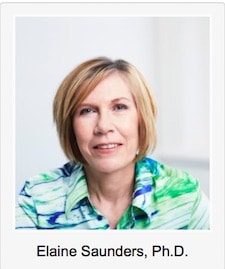 Hearing Impairment – Meeting Unmet Needs
Hearing Impairment – Meeting Unmet Needs
This is Part III of a series describing how one of our colleagues ‘Down Under’ has taken an innovative approach to meeting the unmet needs of hearing loss.
 A first step/event was to have developed DSP (digital signal processing) hearing aid circuitry based on low current drain, producing unique changes to the compression performance, and designed to facilitate self-fitting of hearing aids.
A first step/event was to have developed DSP (digital signal processing) hearing aid circuitry based on low current drain, producing unique changes to the compression performance, and designed to facilitate self-fitting of hearing aids.
This week’s post is focused on three additional events that helped shape the innovative direction taken by Blamey Saunders hears, an Australian entity: 1) The importance of ‘client buy-in,’ and 2) self-fit.
Event Two – The Importance of ‘Client Buy-In’
Many studies have shown the importance of “Client-buy-in”. Better self-involvement gives a greater feeling of psychological ownership, which is thought to be associated with better health outcomes in management of chronic conditions{{1}}[[1]]Pierce,J., Kostova,T., Dirks,K. (2003)The State of Psychological Ownership: Integrating and extending a century of research; Review of General Psychology; 7(1)84-107[[1]]. and has been projected to the self-fine-tuning of hearing aids (i.e. active participation) and hearing aid outcomes, by Convery et al.{{2}}[[2]]Convery, E., Dillon, H., Keidser, G., Carter, L., and Zhou, D. (2010) The Self-Fitting Hearing Aid; National Acoustics Laboratory, Australia; Poster presentation[[2]].
 The author’s experience working with customers’ behaviour with Bluetooth® headsets and other telephony solutions, was that most people accepted that if you bought a Bluetooth headset, you would carry out some personal set up procedure. Thus, it led the author to predict that most people would not find difficulty with hearing aid personalisation, providing that the system is appropriately designed.
The author’s experience working with customers’ behaviour with Bluetooth® headsets and other telephony solutions, was that most people accepted that if you bought a Bluetooth headset, you would carry out some personal set up procedure. Thus, it led the author to predict that most people would not find difficulty with hearing aid personalisation, providing that the system is appropriately designed.
Event Three – The Role of ‘Self-Fit’
For the author, the consumer headset and hearing aid worlds came together. The technologies developed in our first company were very suitable as a starting point for the delivery of self-fitted hearing aids. The outcome is interesting, and research showed that the same hearing aid fine-tuned by an audiologist or by the user gave similar objective results, but the users preferred the sound of the ones they had fine-tuned themselves{{3}}[[3]]Keach,E (2013)Investigation of Hearing Aid Provision via the first fit efficacy of three Adaptive Dynamic Range Optimisation (ADRO®) Fitting Methods; Masters Thesis University of Auckland[[3]].
Event Four – Combine Products and Service
Of course, some people will need help to wear hearing aids properly, so the idea was born for a combined products and services model to provide people with hearing care in their home. Some hearing aid users will still need a lot of help, and seek help, reflecting the difference between primary and tertiary level care, or simply personal preference. Those people who have straightforward hearing loss and/or a positive attitude are good candidates for self-managed care, coupled with a higher level of support when needed. This two-tier method of care was trialled over a five year period at the Royal National Throat Nose and Ear Hospital in London in a project lead by the late Dr. Dafydd (Dai) Stephens. The very innovative clinical model that we have pioneered owes much to the influence of Dai, demonstrating how to be lateral in drawing on clinical evidence in delivering new models of care.
The goal at Blamey Saunders is to emulate that dual primary/tertiary care division in auditory rehabilitation, where we are able to provide both, and can partner with audiologists around the globe for the tertiary level care. It is the author’s view that a sustainable health model is not patronising and recognizes that many people are keen and able to help themselves. Indeed it is encouraged in most areas of health. The Blamey Saunders model with an innovative service component is in its fourth year of operation and has met with strong client approval.
We wanted to identify people who need or want hearing help promptly, after realising that they have some difficulty hearing, and then to either support them remotely or direct them, as early as possible in the hearing aid process, to a face-to-face audiology care model. This has met with mixed reactions from audiologists, some of whom are reluctant to be involved in the auditory rehabilitation, unless they have personally sold the client the devices. It is the author’s observation that some clients believe they can set up the hearing aids themselves, but later find that they have complex hearing issues, which need the attention and support of a good auditory rehabilitation specialist. This is not the same as post-sales support of a product. The client, or an intermediate audiologist, can be helped by our remote hearing fitting system. The client has everything they need in their package to operate the system themselves, or with an audiologist.
This is a classic primary-to-tertiary level care approach, essential to rationalising health care costs, whilst simultaneously improving services. Those people who can help themselves do: those who require more intervention can choose to access greater audiology support, or intervention. It is a truly client-centred approach. The clients are the primary focus of our business, and the multi-disciplinary expert team of specialists, are based in Melbourne and Sydney. As an audiologist, I care a lot about my clients. Blamey Saunders hears employs a team of engineers, scientists, audiologists and other health-care professionals to develop our products and deliver our services.
Note ADRO® is a trademark of Wolfson Dynamic Hearing Pty. Ltd.
Next week’s post will discuss the model used for this innovative program to meet the unmet needs of the hearing impaired.






